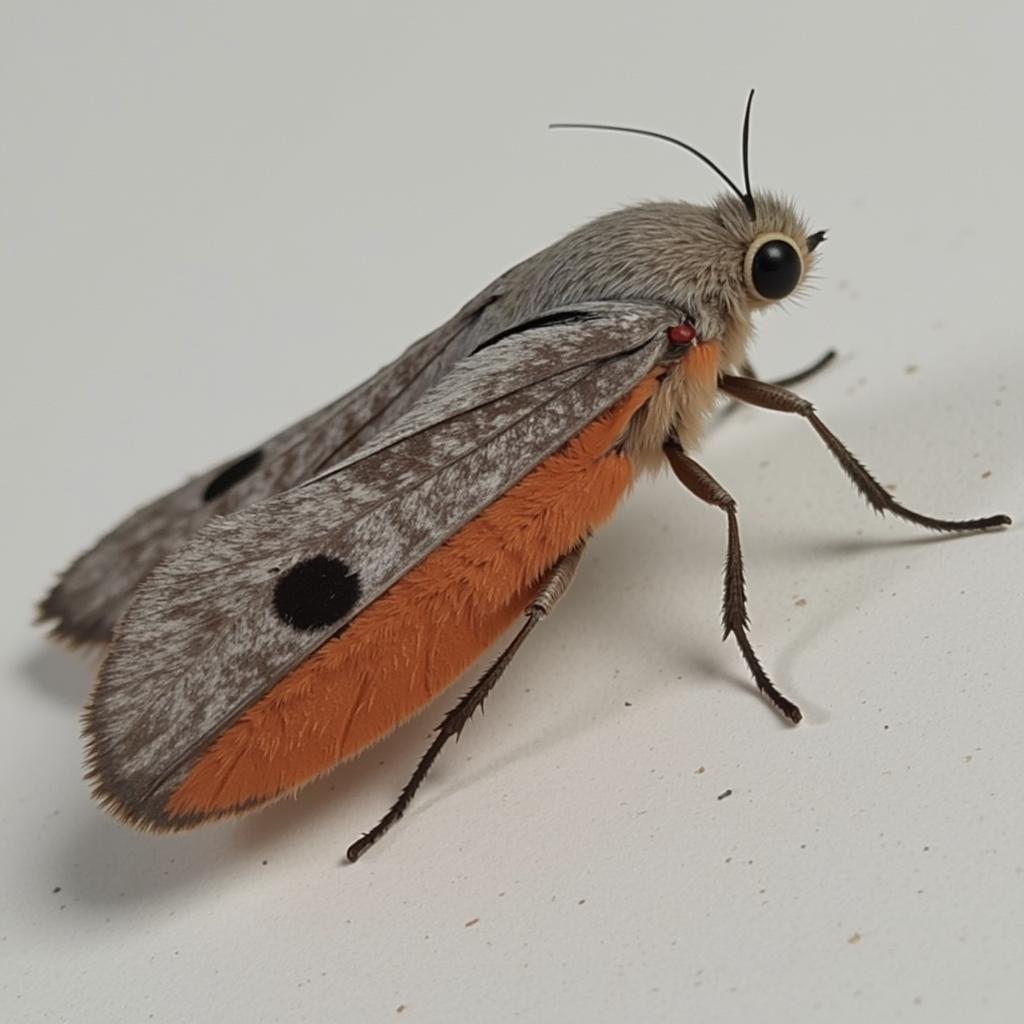Bird Food Moths, also known as Indian meal moths, are a common pantry pest, often found fluttering around birdseed. These small, grayish-brown moths can quickly infest stored products, causing frustration and waste. Understanding their life cycle, identifying signs of infestation, and implementing effective prevention and control methods is crucial for keeping your pantry and birdseed moth-free.
Identifying Bird Food Moths
Bird food moths are relatively small, measuring about ½ inch in length. They have distinctive two-toned wings. The top half is grayish-brown, while the bottom half is a coppery-reddish color. Their larvae are small, cream-colored caterpillars that feed on stored products. These larvae are the primary culprits behind the damage to birdseed and other pantry staples.
 Bird Food Moth Identification: Close-up of an adult Indian meal moth showing its distinct two-toned wings and size.
Bird Food Moth Identification: Close-up of an adult Indian meal moth showing its distinct two-toned wings and size.
The Bird Food Moth Life Cycle
Understanding the bird food moth life cycle is crucial for effective control. Female moths lay hundreds of tiny eggs directly on food sources, like birdseed. These eggs hatch into larvae that voraciously feed on the birdseed, creating webbing and leaving behind frass (excrement). The larvae then pupate, eventually emerging as adult moths to continue the cycle. The entire life cycle can take as little as a month, depending on environmental conditions.
Signs of Bird Food Moth Infestation
How do you know if you have a bird food moth infestation? Look for small, silken webs within the birdseed. You might also notice small, cream-colored larvae crawling around. The presence of adult moths fluttering near the birdseed is another telltale sign. Finally, check for frass, which appears as small, granular debris mixed in with the birdseed.
What does bird food moth damage look like?
Birdseed infested with moths often appears clumped together due to the webbing produced by the larvae. The seed itself might be damaged, and you might notice a musty odor.
Preventing Bird Food Moth Infestations
Preventing an infestation is always the best approach. Store birdseed in airtight containers. Regularly clean and vacuum pantry shelves, paying close attention to cracks and crevices where moths can lay eggs. Practice FIFO (First In, First Out) with stored products to ensure older birdseed gets used before newer purchases. Freezing new birdseed for a few days can also kill any existing eggs or larvae.
What is the best way to store birdseed to prevent moths?
Airtight containers made of glass or plastic are ideal for storing birdseed and preventing moth infestations. Avoid storing birdseed in original paper bags, as they offer little protection.
Controlling Bird Food Moth Infestations
If you discover an infestation, swift action is key. Discard any infested birdseed immediately. Thoroughly clean pantry shelves and surrounding areas with soap and water. Vacuum any remaining debris. Consider using pheromone traps to monitor for adult moths and assess the effectiveness of your control measures.
“Regularly inspecting and cleaning your pantry are crucial steps in preventing pantry pest infestations,” says Dr. Emily Carter, entomologist and Integrated Pest Management specialist. “Taking proactive measures can save you time, money, and the frustration of dealing with a full-blown infestation.”
Conclusion
Bird food moths can be a nuisance, but with proper knowledge and preventative measures, you can keep your pantry and birdseed moth-free. By understanding their life cycle, recognizing the signs of an infestation, and implementing effective control strategies, you can enjoy feeding your feathered friends without the worry of unwanted pantry pests. Remember, consistent vigilance is key to maintaining a moth-free environment.
FAQ
- What attracts bird food moths? Stored products like birdseed, grains, nuts, and dried fruits.
- Are bird food moths harmful to humans? They are not directly harmful, but their presence can contaminate food.
- Can bird food moths infest other pantry items? Yes, they can infest a wide range of stored products.
- How long does it take to get rid of bird food moths? It can take several weeks to completely eliminate an infestation.
- What is the most effective way to prevent bird food moths? Storing birdseed in airtight containers and practicing good pantry hygiene.
- Are there natural remedies for bird food moths? Bay leaves, cedar chips, and vinegar can deter moths.
- Do bird food moths carry diseases? No, they are not known to transmit diseases.
For further assistance, please contact us at Phone Number: 02437655121, Email: [email protected] or visit us at 3PGH+8R9, ĐT70A, thôn Trung, Bắc Từ Liêm, Hà Nội, Việt Nam. We have a 24/7 customer support team.